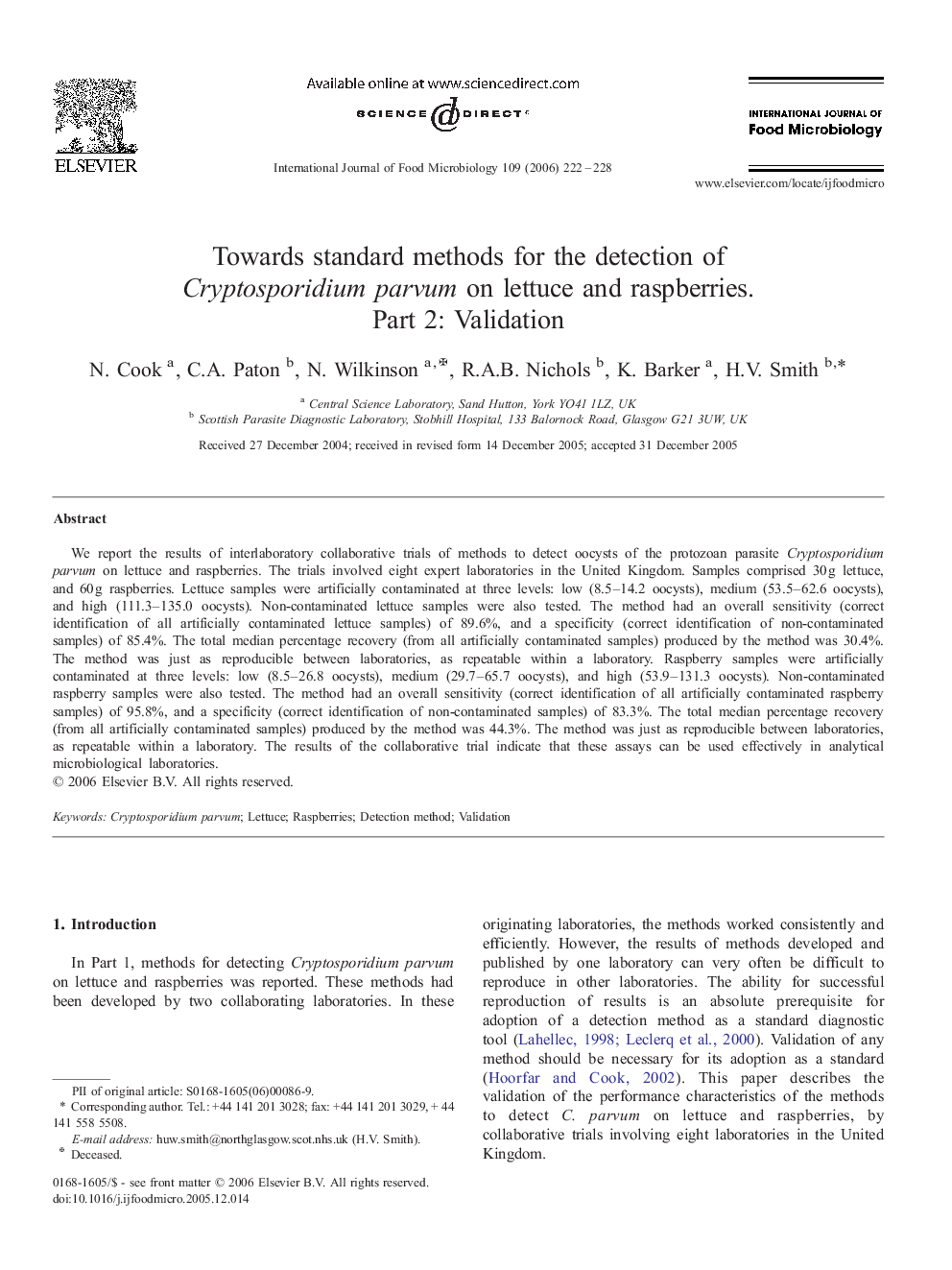| Article ID | Journal | Published Year | Pages | File Type |
|---|---|---|---|---|
| 4370156 | International Journal of Food Microbiology | 2006 | 7 Pages |
We report the results of interlaboratory collaborative trials of methods to detect oocysts of the protozoan parasite Cryptosporidium parvum on lettuce and raspberries. The trials involved eight expert laboratories in the United Kingdom. Samples comprised 30 g lettuce, and 60 g raspberries. Lettuce samples were artificially contaminated at three levels: low (8.5–14.2 oocysts), medium (53.5–62.6 oocysts), and high (111.3–135.0 oocysts). Non-contaminated lettuce samples were also tested. The method had an overall sensitivity (correct identification of all artificially contaminated lettuce samples) of 89.6%, and a specificity (correct identification of non-contaminated samples) of 85.4%. The total median percentage recovery (from all artificially contaminated samples) produced by the method was 30.4%. The method was just as reproducible between laboratories, as repeatable within a laboratory. Raspberry samples were artificially contaminated at three levels: low (8.5–26.8 oocysts), medium (29.7–65.7 oocysts), and high (53.9–131.3 oocysts). Non-contaminated raspberry samples were also tested. The method had an overall sensitivity (correct identification of all artificially contaminated raspberry samples) of 95.8%, and a specificity (correct identification of non-contaminated samples) of 83.3%. The total median percentage recovery (from all artificially contaminated samples) produced by the method was 44.3%. The method was just as reproducible between laboratories, as repeatable within a laboratory. The results of the collaborative trial indicate that these assays can be used effectively in analytical microbiological laboratories.
